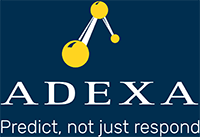Supply Chain Visibility. So what?
Supply chain planning is a very complex process but if it is done right, the benefits are enormous. There are so many moving parts to decide what to do, let alone in real time. How can the planners get so many messages each day and decide how to prioritize tasks and know the consequences of their decisions? Planners are human. Humans are limited to dealing with a handful of variables at a time. Systems can deal with millions. But not all systems are the same. There are those that can help the planners, and there are those that need the planner’s help. By far most of the current S&OP solutions fall in the latter category.
By far many planners use the current supply chain planning systems like we used calculators when they first came out, replacing slide rules. Many of the current systems offer “calculators” to move things around, change parameters and then look at the result. That is not good enough. Systems need to be wise, not number crunchers. To be wise, one needs to observe and learn. Simple but “not” easy. If a planner gets a message that a supplier is late or a customer order to be fulfilled on time, they must experiment and try to “design” a solution. Design is time-consuming and cumbersome. Instead, when an event comes, the system should offer a solution that meets the planners’ objectives. Such a system requires a good understanding of the world, or existing constraints in real time, and intelligence to know how to search for answer(s).
Autonomous planning is precisely that, the ability for the system to offer solutions rather than provide a work bench. Thus, increasing planner productivity. To this end, the model must be able to represent the supply chain environment fully in detail. S&OP systems do not do that. They represent such complicated environments using simply bucketed capacities, fixed leadtimes and pre-defined bottlenecks as well as static models. The latter means the capacity of equipment is always the same, the supplier leadtimes are always the same, and disruptions are exceptions. Disruptions are normal and must be part of the plan, not an afterthought. Changes in capacities are to be monitored and always corrected and suppliers need to be tracked and their variable delivery patterns be observed and used to perform better and more efficient planning.
Like any other system, a supply chain planning system must understand the environment in detail to be able to mimic it. Otherwise, how can it make good decisions? If you are driving and you are only aware of (say) half the traffic around you, would it be possible to drive efficiently? Now if you see the entire traffic and have experience then you can make good decisions in real time no matter what situation is thrown at you and how other drivers misbehave. Both understanding the world and intelligence are needed to perform tasks. Supply chain planning is no exception. Ask your S&OP vendor how well they are modeling the environment and how well can one make decision when the visibility is so myopic? For more information on autonomous planning and how accurate models combined with ML can help to plan and respond in real time, visit Adexa.



